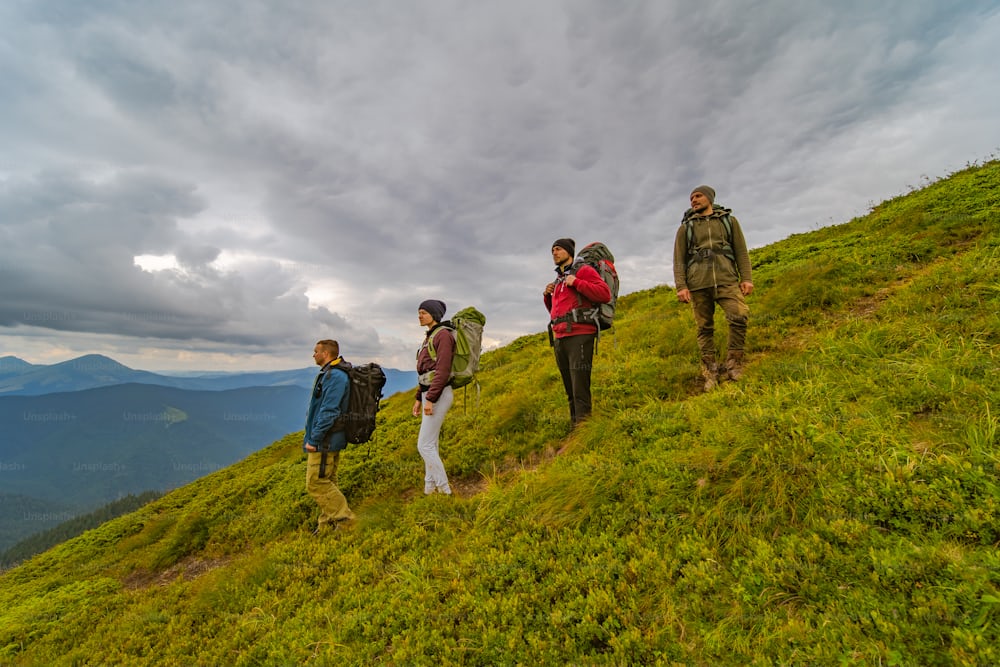The Annapurna Base Camp Trek is a magical experience that lures novice and experienced trekkers with eye-catching landscapes, culture and the possibility of finding oneself at the base of the Annapurna massif. Located in the heart of Nepal, this trek is reasonably achievable, making it an ideal first trek for novices, while still delivering the excitement of high altitude adventures. Depending on the itinerary, this typical trek takes about 7-12 days and is a great mix of nature, ecosystems, and culture.
From the lively Pokhara, trekkers are greeted with their first glimpse of the massive Himalayas during a short drive, or flight to Nayapul. Once that is in place, the trek starts as the route goes through the greenery received from the rhododendron, the village and the terrace field. With each stride reveals jaw dropping sights of the gigantic white-topped mountains including Annapurna South and Machapuchare (also known as Fishtail Mountain) [2]. The trail is clearly marked and accessible for beginners, with plenty of spots to rest and acclimatize along the way.
Cultural Encounters with the Local Gurung and Magar Villages The diverse culture and traditions of the local Gurung and Magar villages could be one of the amazing parts of the Annapurna Base Camp Trek. Trekkers gets an opportunity to have a hospitable experience from the locals, taste the local food and get to know the culture and tradition. Teahouses line the way, offering cozy beds as well as a space to trade stories with fellow trekkers from around the globe, resulting in a communal experience.
As with any trek in the Himalayas, acclimatization is essential, and the gradual ascent of the Annapurna Base Camp Trek provides beginners with the ability to acclimatize to the altitude safely. Normally the maximum altitude in the trek is around 4,130 m (13,550 ft) in Annapurna Base Camp which is not very high and accessible to most fitness levels. The trek has been designed keeping in mind the well being of trekkers and hence, they are advised to listen to their body, take rests and drink plenty of water to make the trek a successful and memorable one.
The reward at Annapurna Base Camp when trekkers arrive is nothing short of spectacular. With towering peaks around us and the gruesome amphitheater of the Annapurna massif around that, the view is a stunning climax of the trek. This is where trekkers can take in their surroundings, relish their accomplishments, and have lasting photographs in front of one of the most beautiful sights on Earth.
Trekking through the Annapurna ranges is not just a feat of strength but a journey that fills the chance to grow and explore, the promise of adventure amid some of nature’s most breathtaking landscapes, and the opportunity to connect deeply with local cultures. This trek is ideal whether you are new to trekking or simply want to experience the beauty of the Himalayas; providing a fulfilling experience from crossing every bend, to enhancing all future treks with the feeling of love and adventure.
Overview of Annapurna Base Camp Trek
One of Nepal’s finest and iconic trekking routes, the Annapurna Base Camp Trek Expeditions is an ultimate adventure for adventure enthusiasts worldwide. Located in the Annapurna Conservation Area, this trek allows you to experience exceptional landscapes, beautiful ecosystems, and colorful cultures. The great thing about this trek is that it is perfect for all levels of experience — in fact, it would be an ideal beginners trek. This journey zigzags over the next 7 to 12 days, so trekkers can adjust to the height, but also to the grandeur of the Annapurna massif.
Trekking through verdant rhododendron forests, picturesque Gurung settlements, and terraced fields, trekkers be treated with stunning views of some of the highest mountains on the planet, such as Annapurna South and Machapuchare. Throughout the journey, travelers can immerse themselves in local traditions, enjoy authentic local food, and experience the exceptional hospitality of the people of Nepal. The trek ends at Annapurna Base Camp (4,130 m / 13,550 ft), a natural amphitheater of peaks. This trek is not only a trekking mission but also a learning program in itself, and hence one of the featured treks in the Himalayas for every adventurer.
What to Expect from the Trekking Route
The Annapurna Base Camp Trek takes a classic trail winding through some of the stunning scenery and best landscapes of the Himalayas. Most trekkers drive from Pokhara to Nayapul, the gateway to the adventure. It climbs up through beautiful villages such as Tikhedhunga and Ghorepani, then brings trekkers to terraced fields and traditional Nepali homes.
Trekking onwards to Ghorepani, an excellent place to watch the sunrise over the Annapurna range. Fresh from a good nights rest, trekkers rise early out of bed to make the trek to Poon Hill, a viewpoint for stunning views. The path then drops down to Modi Khola River, climbs up to Machapuchare Base Camp and then finally up to Annapurna Base Camp Trek Itinerary. The different sections of the walk are beautiful in their own right — rich forests, tumbling rivers and dominant mountains provide a constantly changing scenario.
During the trek, trekkers will experience rich flora and fauna which makes the trek not only a journey to a destination but a journey of nature. The trek is a consistent incline and no hard to follow ways, enabling it to be a safe and alluring experience, with expansive perspectives from each curve of the mountain fill gaze, genuinely making this a noteworthy sight on the Annapurna Base Camp Trek.
Best Time to Trek
Trekking to Annapurna Base Camp at the right season could make a huge difference in the trekking experience. The best time to trek is Spring (March to May) and Autumn (September to November). These months have ideal trekking conditions as the weather is mostly predictable with bright sunny skies and temperate temperatures.
For the spring, here is the colourful rhododendron blossom every option through the vista, adding the trail their scent and dazzlingly hues. Daytime temperatures are mild perfect for long hikes and exploration. For one, you can always see everything, and it really helps you take in the that beauty of the mountains.
In contrast, autumn, with its fresh air and blue skies, is favourite for trekkers. Post-monsoon weather creates dry trails to ensure a great trekking experience. This time of year offers incredible views of the Annapurna massif, and the trails are less congested than in the spring.
Winter (December to February) is a quieter time of year but can be cold and potentially make the trek more difficult as snow may fall. Monsoon season lasts from June to August and brings heavy rainfall, wet, muddy, slippery trails, and may cause trekking plans to go askew. Hence, spring and autumn continue to be the ideal seasons for the Annapurna Base Camp Trek for beginners and the seekers of leisure.
Preparing for the Trek
It is important to prepare for the Annapurna Base Camp Trek, as this will guarantee that the experience remains as enjoyable and as safe as possible. Physical fitness is an important attribute for this trek because of the varying altitude and weather condition involved. Before you leave, you should consider fitness training, either by doing regular cardio sessions and strength training, or by practicing hiking. Focus on Longer Walks or Hikes on Rough Terrain Find the longest walk, or hike, that you can, as long as it involves some uphill and downhill travel, and do it as frequently as you can; your legs have to be ready for what the trek will throw at them.
Physical preparation is one thing but mental preparation is just as important, if not more. By knowing the itinerary, being aware of the road blocks they might face and planning their goals will keep them positive and encourage them to make it through the trek. In addition, you would also want to find out what is altitude sickness, recognize its symptoms, and know how to deal with it. Slow acclimatization is important, so take your time trekking along with listening to your body.
The other crucial part of preparation is packing the right gear. Know the right equipment (clothing, footwear, etc.) for the diverse conditions you will face on the trek, and, make it work for you. Another important thing is that you must have a travel insurance which covers trekking as well. Hopefully this article gives you some ideas for what to think about when preparing for the trek and you will breathe easy during your trek in the Annapurna region soaking up and being one with the magnificent natural and cultural surrounding that you will experience.
Necessary Equipment and Gear Packing List
Having the proper gear for the Annapurna Base Camp Trek Cost is crucial for your success and comfort on the trail. Especially if you’ve never traveled or camped in a tent before, an organized packing list can be a real game changer. Always wear solid trekking shoes with ankle support and good grip because the trails are rocky and in bad conditions. Before the trek, it is also essential to break them in to avoid blisters.
The varying weather in the fields is why layering is so important. Avoid carrying heavy clothing that takes a lot of space and uses the weight of your bag, instead pack moisture-wicking base layers, insulating mid-layer and top it with a waterproof outer layer to protect you from rain and wind. Pack a warm hat, gloves and buff or scarf to stay warm at higher elevations. A decent quality sleeping bag rated to lower temperatures will guarantee you’re sleeping nicely at night in teahouses.
Water is crucial, so travel with an easy-to-fill water bottle that is refalable and a water purification system. Trekking poles offer extra stability in uneven terrain, and a lightweight daypack for your daily hikes can stow snacks, water and a few personal items. You may also want to have a first-aid kit, a headlamp, and a power bank for recharging electronics.
Finally, consider packing personal items such as sunscreen, sunglasses, and the all-important camera to capture the stunning scenery. The Annapurna Base Camp Trek comes with many amazing experiences of nature and travels when trekkers have the bagpacking with right gears to enhance their adventure of the life time in the hty of Himalayas.
Fitness and Workout Tips
There is no doubt, physical fitness is the key to completing a successful Annapurna Base Camp Trek. Especially if you have not gone trekking before, preparing your body for experience is key. It will take at least six to eight weeks to get really fit, so the earlier you start your training regime, the better. You will want to work on your cardio so get out to hike, run, cycle, or swim. Set yourself three to four days a week doing this, and gradually build the intensity and length of your sessions.
Add some strength training to your routine that focuses on legs, core, and upper body. Strengthening exercises such as squats, lunges, and planks can help improve your balance and strength to work with angles. Consider doing some hikes with weighted backpacks, so you can get used to the weight on the trail and develop strength and endurance.
Work in flexibility and balance exercises, such as yoga or pilates, which can play an important part in your overall mobility and injury-prevention program. Do long hikes that are hilly/mountainous as much as possible leading up to the trek date. Not just is it a good workout, but it also allows you to adapt to the altitude. Finally, listen to your body, take breaks when necessary, and drink water to stay fit for your trip.
Awareness about Altitude and Acclimatization
Part of preparing for a successful Annapurna Base Camp Trek is to understand altitude and the process of acclimatization. Elevation means thinner air, and that means less oxygen to breathe. This can result in altitude sickness, a condition which can be quite serious and can occur to many people on trek. They can cause everything from mild headaches and nausea to more severe responses like confusion or loss of coordination.
Acclimatization is the natural response of the body to higher elevations. Your body essentially needs several days at a certain height for it to acclimatise. Make sure to walk slowly during the trek, taking rest days where necessary. Above 3000 meters (~10,000 feet) the general rule is to not gain more than 300-500 meters (~1000-1600 feet) of elevation a day.
Listen to your body, and you should immediately go down whenever you feel some nasty symptoms. Increase your water intake; never drink alcohol or sleeping pills which can aggravate altitude conditions. Knowledge and awareness of altitude acclimatization practices will improve your trekking experience and safety manifold in the Annapurna region.
Daily Itinerary Overview
Details of the daily plan on the Annapurna Base Camp Trek map take 7 to 12 days depending on the route and the pace of your group. This trek generally starts with a drive from Pokhara to Nayapul and the first day’s walking is to Tikhedhunga or Ulleri, enjoying the lush countryside and the hospitality of the local villages.
The next days are a classic route taking in Ghorepani (a favourite sunrise viewpoint) before heading up to Poon Hill and then dropping back down into the Modi Khola River valley. The trek takes you to Machapuchare Base camp and, ultimately, Annapurna Base Camp, but not before you are gradually gaining some altitude and passing from peak to peak.
Generally, you will trek 5 to 7 hours every day, and the difficulty will change. Trekkers have plenty of time to enjoy meals and rest, and take in the beautiful surroundings. Strategically placed acclimatization days at Ghorepani and Machapuchare Base Camp lend both safety and enjoyment to the itinerary. A proper itinerary allows trekkers to enjoy the beauty of the Annapurna region while gradually and safely making their way to goal.
Where to Stay and What to Eat
As you trek along the ABC trek route, the bulk of your accommodation will be provided by teahouses, which are basic but comfortable lodgings where you will find a warm bed and delicious food at the end of every long day of trekking. The teahouses tend to have twin-sharing rooms with basic bedding (bring your own sleeping bags to be be on the safe side), and shared bathroom facilities. The two in particular are fairly basic, but they also come with some great views of the mountains that is unique to local trekkers.
When it comes to food, savory and refreshing meals are available at teahouses from far beyond verirntX (xi Yuan) and from haftp (Tashkiran), and, of course, food can be prepared in accordance with any special dietary or ethnic needs. Food offered on the trail is often traditional Nepali fare, like dal bhat (lentil soup with rice), which offers the nutrients and energy trekkers need to keep moving forward. Lots of teahouses have Western options too like pasta, pizza or pancakes so everyone can have what they want.
One should be careful enough for drinking purpose so as far as possible drink bottled or purified water to avoid many waterborne diseases. You may find boiled water or treatment devices in some teahouses. As you climb higher up the mountains, there may not be so many food supplies available so its a good idea to make take some energy snacks like nuts, chocolate or granola bars with you. So, the teahouse experience is something more than just a bed and food, that includes making new friends along the way and a great adventure overall.
Dealing With Permits and Restrictions
Permits, Regulations: Before undertaking Annapurna Base Camp Trek Planning For trekking legally in the Annapurna region, trekkers should apply for the following two permits: ANNAPURNA CONSERVATION AREA PERMIT (ACAP) and ANNAPURNA TREKKERS’ INFORMATION MANAGEMENT SYSTEM (TIMS) card. The first one is the ACAP which enables an entrance into the defined conservation area and the second one is the TIMS card, which is used to keep a record of the number of trekkers staying in the area where they’re travelling and also used to give safety information.
You can get these permits either in Pokhara or Kathmandu with a couple of documents, including one passport-sized photo and the passport itself. So plan in advance to get these permits or else you may have to wait at the trailhead. These permits have different fees depending on both your nationality and the length of your stay, so check current details before your trip.
Be also aware of regulations in the locality such as local regulations regarding environment conservation as well as practices in the villages (if any) that you pay a visit to. To keep the natural beauty of the Annapurna region, you have to stick to the “Leave No Trace” principles. Do make sure you know all your permits and regulations in advance as once everything is in order, trekkers should not have any problem or issues enjoying their trek to the Annapurna area in all its natural beauty and cultural perspective.
Health and Safety Tips
Annapurna base camp trek for beginners, health and safety. A major worry is altitude sickness, which can even strike those in great shape. To counter this, you have to ascend slowly and give your body time to adapt. Listen to your body — if you have worse symptoms such as: headache, dizziness, or nausea, you need to go down a height, it has to be done quickly.
ABC Hike Also, be sure to drink lots of water on the hike to stay hydrated. Bring a refillable water bottle, and possibly a purification system, so that you can always have clean drinking water available. Include a simple pharmacy with basic medications for headaches, stomach, and altitude sickness.
High elevation means more powerful UV rays, so wearing sun protection is a must. Protect your skin with sunscreen and include sunglasses and a big hat to protect your face from the sun and eat a balanced diet whenever possible, especially healthy food that will keep your energy up during the hike. Thus, by focusing on the health and safety you can have a lot more fulfilling and unforgettable trekking experience in the Annapurna region.
Cultural Background and Do’s and Do Not’s
Trekkers have an excellent chance to experience and indulge in the rhythm of life and culture of the local civilizations of the Annapurna Base Camp Trek. What you’ll find in this region will primarily be the Gurung and Magar people who are ever so ready to greet you with their incredible hospitality. Familiarity with local etiquette is a must for good impressions with any villagers.
Shoe-off when visiting local homes or temples, modest dress is also a must. Welcome is often followed with a warm : “Namaste,” and bow with hands pressed together. Be cautious with photography (especially of people): always ask before snapping them – respect their privacy and traditions.
Finally, be aware that local customs and practices may differ from your own, so be respectful of them. Attending cultural events or a local festival (if possible) can provide additional insight and enrich your experience in the local communities. So by understanding these cultural aspects, and abiding by the rules of conducts, not only will you enhance your adventure, but you will also make more bonds with the locals.
What to Expect on the Trail
Annapurna base camp trek is an adventure with many different levels and landscapes to experience. The trekking encompasses subtropical forests, alpine meadows and rugged mountain paths that offer impressive views of the Annapurna every step of the way. The trek generally heads upward through delightful towns, where trekkers are welcomed by local teahouses.
The trail gets steeper and is more challenging as you walk up especially at higher altitudes. Be prepared to walk on rocky trails, cross rickety suspension bridges and watch out for wildlife. The weather fluctuates greatly from warm days to cool nights, so it is important to pack layers to prepare for the changing weather conditions.
Most days on the trail consist of hours of walking, with meal breaks and rest stops. This adds to your adventure, as you bond with your other fellow trekkers — share nights, stories and motivation along the way. Share stories at communal dinners in teahouses during the evenings about your days’ travels. It is an amazing adventure that combines adventure, scenery, and culture — a must-do trek for any traveler.
Tips to take perfect photographs: Photography for Beginners
Photography along the Annapurna range can be among the most rewarding trekking experience. And for those starting out, a couple of tips will help you shoot some amazing photos on the hiking trail. Invest in a decent camera at first, but you do not have to bring in the best equipment; a lot of smartphones have great cameras nowadays.
For landscapes, it is best to capture them during golden hours (morning or late afternoon), when the light is soft and warm. Play around for perspective, for example, put some flowers or stones in the front of the camera to give some depth to your shots.
When shooting photos of people, just keep in mind the local culture. Respect the privacy of individuals; always ask permission before taking photographs of them. Also bring a portable tripod, great if you plan to do any low-light shooting, or if you want to take some nice landscape panoramas.
Lastly, put down the lens and enjoy the views! Now this has to be rewarding as capturing it — soaking it. Now you will have no problem to make the perfect notes of your memorable trip to Annapurna Base Camp!
Conclusion and Final Thoughts
For the players of base camp trekking, the Annapurna Base Camp Trek will undoubtedly be a memory for a lifetime as its beauty, civilization, and growth opportunities are exceptional. With a combination of deliberate planning, knowledge of the health and safety features, and commitment to the local community, beginners can turn their trekking into an impactful labour. The Annapurna region is like the gateway to trekking in the Himalayas, with its easy access, variety of ecosystems, and friendly communities.
When distributed, it is important to be flexible and open-minded. When trekking a lot things tend not to go according to plan, weather can change and trails can vary in difficulty, but these stories become the best stories! Meet fellow travelers, interact with local villages and simply enjoy the beautiful landscape.
Ultimately, whether or not you are on the way to Annapurna Base Camp or just a way to go, this trek will bring you with lasting parts and save you with all the fascination nature beauty along with the warmth of the other people.4284863220016428829 So tighten your boots, grab your equipment, and get ready for the journey of a lifetime through the great Annapurna Region!










